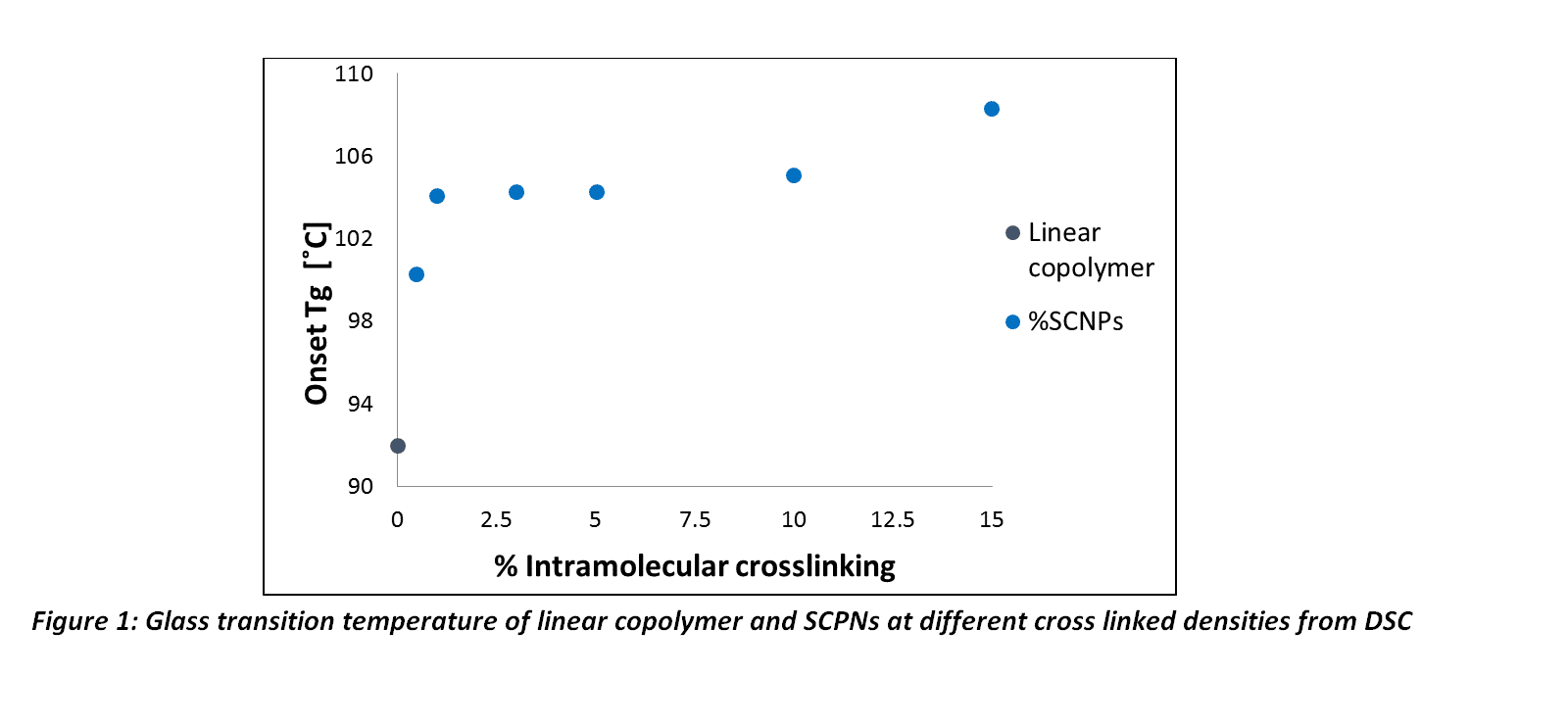
Tuning Mechanical and Thermomechanical Properties by Intramolecular Cross-Linking
The thermomechanical response of a solid polymer is a function of the forces between the polymer chains, which, above the entanglement limit, depends almost exclusively on the monomer chemistry. In this research, we exploit intramolecular cross-links to physically limit entanglement between chains and study the effect of the thermomechanical and mechanical properties independently of the monomer chemistry. The synthetic strategy involves a two-step approach; first a linear chain is prepared; then, intramolecular cross-linking is carried out under high dilution to inhibit intermolecular reactions. In my research, I have been using RAFT polymerization to prepare a linear random copolymer containing a mixture of methyl methacrylate (MMA) and (2-acetoacetoxy) ethyl methacrylate (AEMA). Cross-linking is performed by Michael addition using trimethylolpropane triacrylate as the Michael acceptor.[1] This project expands the possibilities in bottom-up materials design, in which the architecture of the polymer chains on the nanoscale is specifically tailored towards desired final material properties. This research will lead to a better understanding of how polymer architecture, in addition to chemistry, affects the form and entanglement of chains, and therefore solid-state bulk thermomechanical and mechanical properties.
[1] “Michael” Nanocarriers Mimicking Transient-Binding Disordered. Ana Sanchez-Sanchez, Somayeh Akbari. ACS Macro Letters, p. 2013.


Powered by Eventact EMS